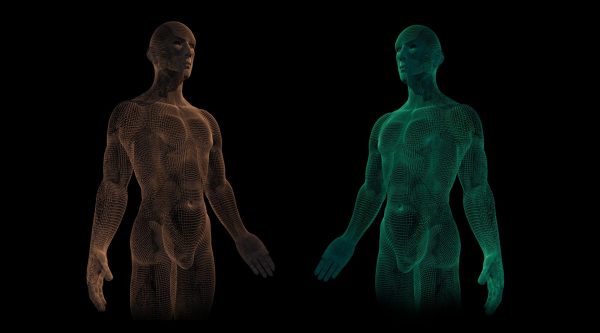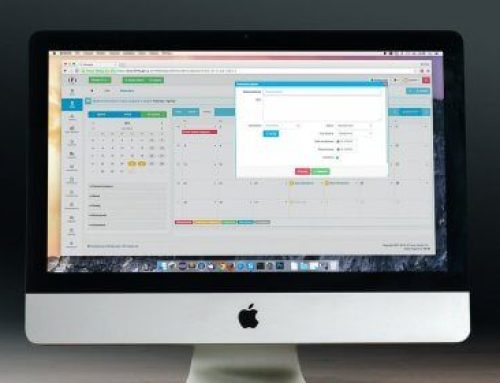Was der Unterschied zwischen VFX und Animationen ist.
Die meisten Menschen haben mit Sicherheit schon etwas von VFX und Animation etwas gehört. Diese Bereiche werden in unserer heutigen Zeit immer wichtiger und sind schon ein wichtiger Teil in den Medien z.B. in Filmen oder in der Werbung.
Der folgende Beitrag zielt darauf ab, eine Differenzierung zwischen VFX und Animation vorzunehmen.

Was ist eine Animation?
Animation ist der Prozess, bei dem Bilder verwendet werden, um die Illusion von Bewegung durch die schnelle Bewegung dieser Bilder in einer Sequenz zu erzeugen.
Animationen können in verschiedenen Geräten und Formaten aufgezeichnet oder gespeichert werden. Denkbare Formate, in den Animationen gespeichert werden, sind Videobänder, Flip Books, Kinofilme oder digitale Medien.
Die ersten Anzeichen von Animationen, die entdeckt wurden, stammen aus dem Iran vor 5000 Jahren. Der Entdecker fand ein Artefakt, das eine Sequenz von einem Wüsten-Steinbock zu haben schien, der springt, um Blätter von einem Baum zu essen.
Kommen wir nun zu den verschiedenen Arten der Animation.
Traditionelle Animationen.
Dabei werden Bilder auf transparenten Acetat-Sheets, so genannten Zellen, gezeichnet und fotografiert, indem sie vor einem Hintergrund gehalten werden. Es wird Bild für Bild aufgenommen und jedes Bild unterscheidet sich leicht von dem anderen. Dieses Verfahren wurde im 20. Jahrhundert vor allem für Kinofilme eingesetzt.
Stop Motion Animationen.
Diese Art der Animation bezieht sich auf die Verwendung von realen Objekten und deren physische Manipulation, um die Illusion von Bewegung zu erzeugen. In diesem Zusammenhang wird auch Frame-by-Frame-Fotografie verwendet. Darunter gibt es verschiedene Arten von Stop-Motion-Animationen, die meistens nach dem verwendeten Material benannt sind. Diese Art von Animation ist kostengünstiger und zeitaufwendiger.
Computer Animation.
Wie der Name schon sagt, handelt es sich um Animationen, die über den Einsatz von Computern und Software erstellt werden. Es ist in 2 Segmente unterteilt:
2D Animation – Solche Animationen beziehen sich auf die Manipulation von Bildern und 2D-Vektorgrafiken. Der Prozess beinhaltet Techniken wie traditionelle Animation, Onion Skinning, interpoliertes Morphing und Rotoscopy.
3D Animation – Diese Animation bezieht sich auf die Erstellung von dreidimensionalen Grafiken. Der Animator erhält ein manipuliertes Modell und arbeitet daran, die Illusion von Bewegung zu erzeugen.
Da Animationen zu einem wichtigen Teil heutiger Medien geworden sind, gibt es mittlerweile zahlreiche Jobangebote für diejenigen, die in dieser Richtung eine Ausbildung oder ein Studium absolviert haben. Exemplarisch können die folgenden Arbeitsfelder differenziert werden:
- 3D Modellierer
- Rigging Artist
- Texturing Artist
- Lighting Artist
- 2D und 3D Animator
Es gibt noch zahlreiche weitere artverwandte Arbeitsbereiche, die wir hier nicht weiter thematisieren möchten. Kommen wir nun zu Visual Effects (VFX).
Was ist VFX?
VFX ist der Prozess der Erstellung und Manipulation von Bildern, die computergeneriert sind. Diese Bilder werden mit Live-Action-Aufnahmen kombiniert, wenn es um Filmeherstellung oder jede Form der Videovisualität geht. VFX werden eingesetzt, um Filmmaterial zu generieren, die im Rahmen der Filmentwicklung zu teuer, gefährlich oder möglicherweise unmöglich zu realisieren wären. Diese Form des Content lässt sich heute mithilfe von Animations- und Compositing-Software sehr leicht erstellen.
Timing: VFX ist eines der wichtigsten Elemente bei der Erstellung eines Films und wird in der Regel in der Postproduktion des Films integriert, aber die Planung wird bereits in der Planungsphase choreographiert.
Die Kategorisierung von visuellen Effekten kann in vier Segmenten erfolgen:
Matte Painting: Diese Art von Bildern besteht aus der Kombination verschiedener Arten von Bildern und Objekten, die bei der Bearbeitung zusammengefügt werden, um ein einziges Bild der gewünschten Aufgabe zu erzeugen.
Live-Action-Effekte: Dieser Prozess beinhaltet die Schlüsselbildung der Akteure durch Blue- oder Green Screening.
Digitale Animationen: Partikeleffekte, digitale Sets und Hintergründe, Compositing und Rotoscopy gehören alle zu dieser Kategorie und beinhalten den Einsatz von Software zum Hinzufügen oder Entfernen von Elementen gemäß den Anforderungen des Films.
Auch der VFX-Bereich bietet heute großartige Jobmöglichkeiten:
- Compositing Artist
- Rotoscopy Artist
- Matte Painter
- Paint Artist
- 3D Match Moving
Sowohl bei Animation als auch bei VFX hängt alles davon ab, wie gut ihre Arbeit ist und wie viel wissen Sie und ihr Unternehmen mitbringen. Wir hoffen, dass dieser Beitrag ihnen die Unterschiede zwischen Animationen und VFX klar aufgezeigt hat, so dass Sie sich besser zwischen diesen beiden Bereichen entscheiden können.
Vielen Dank für ihren Besuch.


